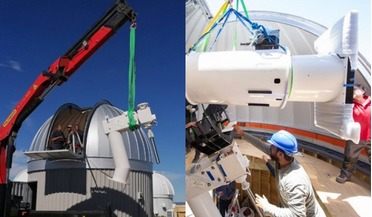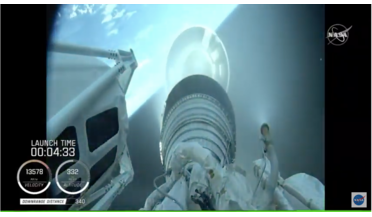 11 January 2019
Birth of a black hole possibly captured for first time
11 January 2019
Birth of a black hole possibly captured for first time
... such an event has been seen. The supernova at the centre of the phenomena was first spotted by the ATLAS telescope in Hawaii, but it was soon apparent that this was no ordinary death throe of an ageing massive star...
 01 April 2020
The Atlas of Mars
01 April 2020
The Atlas of Mars
... oceans of Earth, but a glance at this book could have you believing it. Following the publication, in 1979, of a global atlas based on Viking Orbiter photography, our knowledge of Mars was enhanced by the release of a global geological map in 1986...
 23 April 2018
The International Atlas of Mars Exploration, Vols 1 & 2
23 April 2018
The International Atlas of Mars Exploration, Vols 1 & 2
... a history of Mars exploration, the most important differentiating factor (its USP if you like) is its presentation “in atlas format”. As the author states in his preface, it is “primarily a book of maps, a book about places”. As a result, in leafing...
 19 September 2023
The Atlas of Space Rocket Launch Sites
19 September 2023
The Atlas of Space Rocket Launch Sites
... without a gate pass (and hours of uncomfortable travel) thanks to its impressive photography and useful maps. In typical atlas style, the launch sites are grouped into geographical regions: the Americas; Balto-Mediterranean; Eurasia; Indo...
 04 February 2022
NASA’s real-life “Don’t Look Up” programme
04 February 2022
NASA’s real-life “Don’t Look Up” programme
... impact hazard to Earth. Now involving four telescopes, ATLAS has expanded its reach to the southern hemisphere from ... Coordination Office. “With the addition of these two telescopes, ATLAS is now capable of searching the entire dark sky every 24...
 30 July 2020
NASA's Perseverance rover successfully blasts off to Mars
30 July 2020
NASA's Perseverance rover successfully blasts off to Mars
...rover mission successfully launched toward Mars atop a United Launch Alliance Atlas V rocket from Space Launch Complex 41 at the Cape Canaveral... 11:52 GMT, the solid rocket booster helping the Atlas V launch the Mars rover separated from the booster...